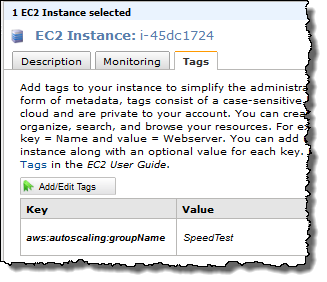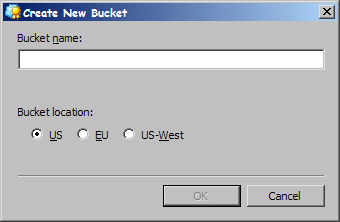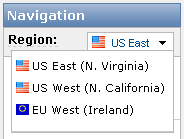Category: Auto Scale
AWS Summer Startups: ShowNearby
ShowNearby is a leading location-based service in Singapore and an early adopter of the Android platform. Unlike many mobile apps out there, ShowNearby started with deployment on Android and then moved on to the iPhone by mid 2010 and Blackberry by fall of 2010. Today, the ShowNearby flagship app is available on Android, iPhone and Blackberry and reports approximately 100 Million mobile searches conducted across all its platforms.
Due to the success of our application, we had a very big growth in a short period of time. When we launched on the popular platforms of iOS and subsequently BlackBerry, we were blown away by the huge surge of users that started using ShowNearby. In fact in December of 2010, ShowNearby became the top downloaded app in the App store, edging out thousands of other popular free apps in Singapore! It was then that we realized we needed a scalable solution to handle the increasing load and strain on our servers that our existing provider was unable to provide.
Our infrastructure at the time was hosted with a local service provider, but was unable to cope with the high traffic peaks we were facing.We analyzed a few vendors and decided to go ahead with Amazon because of it’s reliability, high availability, range of services and pricing, but mostly because of its solid customer support.
As part of our deployment, we added AWS services incrementally. Currently we use extensively Amazon EC2 instances with auto scaling, Relational Database Service (RDS), Simple Queue Service (SQS), Cloudwatch and Simple Storage Service (S3).
Next item on our list is to focus on automating the deployment of infrastructure environments with cloud formations, as well as optimizing content delivery globally with Cloudfront.
Choosing the Tech Stack That Makes Business Sense
ShowNearby currently leverages on the LAMP stack for most our web services. Delivery of accurate, always available, location based data is ShowNearbys top priority.That is why we chose AWS.
Other important things why to choose cloud/AWS: Speed and agility to create and tear down infrastructure as and when it is needed. Good and fast network accessibility for our app. Ability to scale up and out when needed. Ability to duplicate infrastructure into new regions.
Reaching Automation Nirvana with AWS
We chose to use AWSs Linux based AMI and dynamically build on top of it using well defined, automatic configuration. Now, every time an instance is started, we are sure the infrastructure is always in a known state. Admittedly, a lot of hard work is involved to achieve Automation Nirvana, but knowing precisely what works at the end of the day helps us sleep at night.
- We use Amazon S3 to store infrastructure configuration and user provided content/images. ShowNearbys business is currently in, and marching into new, regions, so S3 is a natural precursor to AWSs CloudFront content distribution service.
- We use SQS to help process user behaviour and to determine usage patterns.
- We use this to provide our dear users with a better, and hopefully, more personalised experience.We use spot instances for early development & testing servers.
- We use CloudWatch extensively – how could we do without it?
- We use RDS, for our hosted mySQL databased needs, of course
- We use the command-line and PHP AWS API tools to a large extent, which provides us increased business agility.
Words of Wisdom for Mobile Startups
We would tell them to find partners who can be good friends at the same time. The race is long and tough, so better do it enjoying every step of the way. There is a window of opportunity in Asia now open to unleash your full potential, show what you are capable of and you’ll be rewarded.
Today, if we need to refresh or update a web application, we restart new instances and flush out the old. Moving forward, we are looking into reducing the time between releases still further and so, we are working to improve on our already solid infrastructure and configuration management. Further automation in the form of Chef and/or Puppet or similar is being investigated.
——————————————————
Enter Your Startup in the AWS Start-up Challenge!
This year’s AWS Start-up Challenge is a worldwide competition with prizes at all levels, including up to $100,000 in cash, AWS credits, and more for the grand prize winner. 7 Finalists receive $10,000 in AWS credits and 5 regional semi-finalists receive $2,500 in AWS credits. All eligible entries receive $25 in AWS credits. Learn more and enter today!
You can also follow @AWSStartups on Twitter for updates.
-rodica
Auto Scaling – Notifications, Recurrence, and More Control
We’ve made some important updates to EC2’s Auto Scaling feature. You now have additional control of the auto scaling process, and you can receive additional information about scaling operations.
Here’s a summary:
- You can now elect to receive notification from Amazon SNS when Auto Scaling launches or terminates EC2 instances.
- You can now set up recurrent scaling operations.
- You can control the process of adding new launched EC2 instances to your Elastic Load Balancer group.
- You can now delete an entire Auto Scaling group with a single call to the Auto Scaling API.
- Auto Scaling instances are now tagged with the name of their Autos Scaling group.
Notifications
The Amazon Simple Notification Service (SNS) allows you to create topics and to publish notifications to them. SNS can deliver the notifications as HTTP or HTTPS POSTs, email (SMTP, either plain-text or in JSON format), or as a message posted to an SQS queue.
You can now instruct Auto Scaling to send a notification when it launches or terminates an EC2 instance. There are actually four separate notifications: EC2_INSTANCE_LAUNCH, EC2_INSTANCE_LAUNCH_ ERROR, EC2_INSTANCE_TERMINATE, and EC2_INSTANCE_TERMINATE_ERROR. You can use these notifications to track the size of each of your Auto Scaling groups, or you can use them to initiate other types of application processing or bookkeeping.
George Reese, this feature is for you!
Recurrent Scaling Operations
Scheduled scaling actions for an Auto Scaling group can now include a recurrence, specified as a Cron string. If your Auto Scaling group manages a fleet of web services, you can scale it up and down to reflect expected traffic. For example, if you send out a newsletter each Monday afternoon and expect a flood of click-throughs, you can use a recurrent scaling event to ensure that you have enough servers running to handle the traffic. Or, you can use this feature to launch one or more servers to run batch processes on a periodic basis, such as processing log files each morning.
Instance Addition Control
The Auto Scaling service executes a number of processes to manage each Auto Scaling group. These processes include instance launching and termination, and health checks (a full list of the processes and a complete description of each one can be found here).
The SuspendProcesses and ResumeProcesses APIs give you the ability to suspend and later resume each type of process for a particular Auto Scaling group. In some applications, suspending certain Auto Scaling processes allows for better coordination with other aspects of the application.
With this release, you now have control of an additional process, AddToLoadBalancer. This can be particularly handy when newly launches EC2 instances must be initialized or verified in some way before they are ready to accept traffic.
Hassle-Free Group Deletion
You can now vanquish an entire Auto Scaling group to oblivion with a single call to DeleteAutoScalingGroup. You’ll need to set the new ForceDelete parameter to true in order to do this. Before ForceDelete you had to wait until all instances in an Auto Scaling group were terminated before you were allowed to delete the Auto Scaling group. Auto Scaling will terminate all running instances in the group and obviates the waiting.
Easier Identification
Instances launched by Auto Scaling are now tagged with the name of their Auto Scaling group so that you can find and manage them more easily. The Auto Scaling group tag is immutable and doesnt count towards the EC2 limit of 10 tags per instance. Here is how the EC2 console would show an instance of the Auto Scaling group SpeedTest:

You can read more about these new features on the Auto Scaling page or in the Auto Scaling documentation.
These new features were implemented in response to feedback from our users. Please feel free to leave your own feedback in the EC2 forum.
— Jeff;
Upcoming Event: AWS Tech Summit, London
I’m very pleased to invite you all to join the AWS team in London, for our first Tech Summit of 2011. We’ll take a quick, high level tour of the Amazon Web Services cloud platform before diving into the technical detail of how to build highly available, fault tolerant systems, host databases and deploy Java applications with Elastic Beanstalk.
We’re also delighted to be joined by three expert customers who will be discussing their own, real world use of our services:
- Francis Barton, from Costcutter
- Richard Churchill, from Servicetick
- Richard Holland, from Eagle Genomics
So if you’re a developer, architect, sysadmin or DBA, we look forward to welcoming you to the Congress Centre in London on the 17th of March.
We had some great feedback from our last summit in November, and this event looks set to be our best yet.
The event is free, but you’ll need to register.
~ Matt
New Webinar: High Availability Websites
As part of a new, monthly hands on series of webinars, I’ll be giving a technical review of building, managing and maintaining high availability websites and web applications using Amazons cloud computing platform.
Hosting websites and web applications is a very common use of our services, and in this webinar we’ll take a hands-on approach to websites of all sizes, from personal blogs and static sites to complex multi-tier web apps.
Join us on January 28 at 10:00 AM (GMT) for this 60 minute, technical web-based seminar, where we’ll aim to cover:
- Hosting a static website on S3
- Building highly available, fault tolerant websites on EC2
- Adding multiple tiers for caching, reverse proxies and load balancing
- Autoscaling and monitoring your website
Using real world case studies and tried and tested examples, well explore key concepts and best practices for working with websites and on-demand infrastructure.
The session is free, but you’ll need to register!
See you there.
~ Matt
Expanding the AWS Footprint
 A new AWS Region is online and available for use!
A new AWS Region is online and available for use!
Our new Northern California (US-West) Region supports Amazon EC2, Amazon S3, SimpleDB, SQS, Elastic MapReduce, Amazon CloudWatch, Auto Scaling, and Elastic Load Balancing. The AWS documentation contains the new endpoints for each service.
The existing Amazon S3 US Standard Region provides good, cost-effective performance for requests originating from anywhere in the country. The new S3 region optimizes performance for requests originating from California and the Southwestern United States. In either case, Amazon CloudFront can be used to provide low-latency global access to content stored in S3. The Northern California and EU Regions provide read-after-write consistency for PUTs of new objects in your Amazon S3 bucket and eventual consistency for overwrite PUTs and for DELETEs. The existing US Standard Region continues to provide eventual consistency.
Service pricing in the Northern California Region will be at a small premium to the pricing in our existing US-based Region, reflecting a difference in our operating costs.
 As you can see from the screen shot at right, the newest release of Bucket Explorer provides support for the new region. Other tools will add support in the near future. If you are a tool vendor, please post a comment as soon as you’ve added support for the new region.
As you can see from the screen shot at right, the newest release of Bucket Explorer provides support for the new region. Other tools will add support in the near future. If you are a tool vendor, please post a comment as soon as you’ve added support for the new region.
 Update: The CloudBerry S3 Explorer now supports the Northern California Region. It also includes a preview version of the code needed to support AWS Import/Export.
Update: The CloudBerry S3 Explorer now supports the Northern California Region. It also includes a preview version of the code needed to support AWS Import/Export.
 You can get started with this Region now. Existing code and tools should require only a change of service endpoint to work. The AWS Management Console and ElasticFox already support the new Region.
You can get started with this Region now. Existing code and tools should require only a change of service endpoint to work. The AWS Management Console and ElasticFox already support the new Region.
As you may already know, we have already announced that we plan to bring AWS to Asia in 2010, starting out with multiple Availability Zones in Singapore in the first half of 2010, followed by other Asian locations later in the year.
Update: The AWS Simple Monthly Calculator has also been updated and now shows the new region in the drop down box. You can use to the calculator to estimate your costs.
— Jeff;
Now In Europe: Amazon SimpleDB, CloudWatch, Auto Scaling, and Elastic Load Balancing
I’m happy to announce that the following AWS services are now available in Europe:
- Amazon SimpleDB – Highly available and scalable, low/no administration structured data storage.
- Amazon CloudWatch – Monitoring for the AWS cloud, starting with providing resource consumption (CPU utilization, network traffic, and disk I/O) for EC2 instances.
- Elastic Load Balancing – Traffic distribution across multiple EC2 instances.
- Auto Scaling – Automated scaling of EC2 instances based on rules that you define.
All of the services work just the same way in Europe as they do in the US. Existing applications and management tools should be able to access the services in this region after a simple change of the service endpoint. As is the case with S3 and EC2, these services are independent of their US counterparts.
Our full slate of infrastructure services is now available in Europe. With the European debut of these services, developers can now built reliable and scalable applications in both of the AWS regions (US and Europe).
— Jeff;

